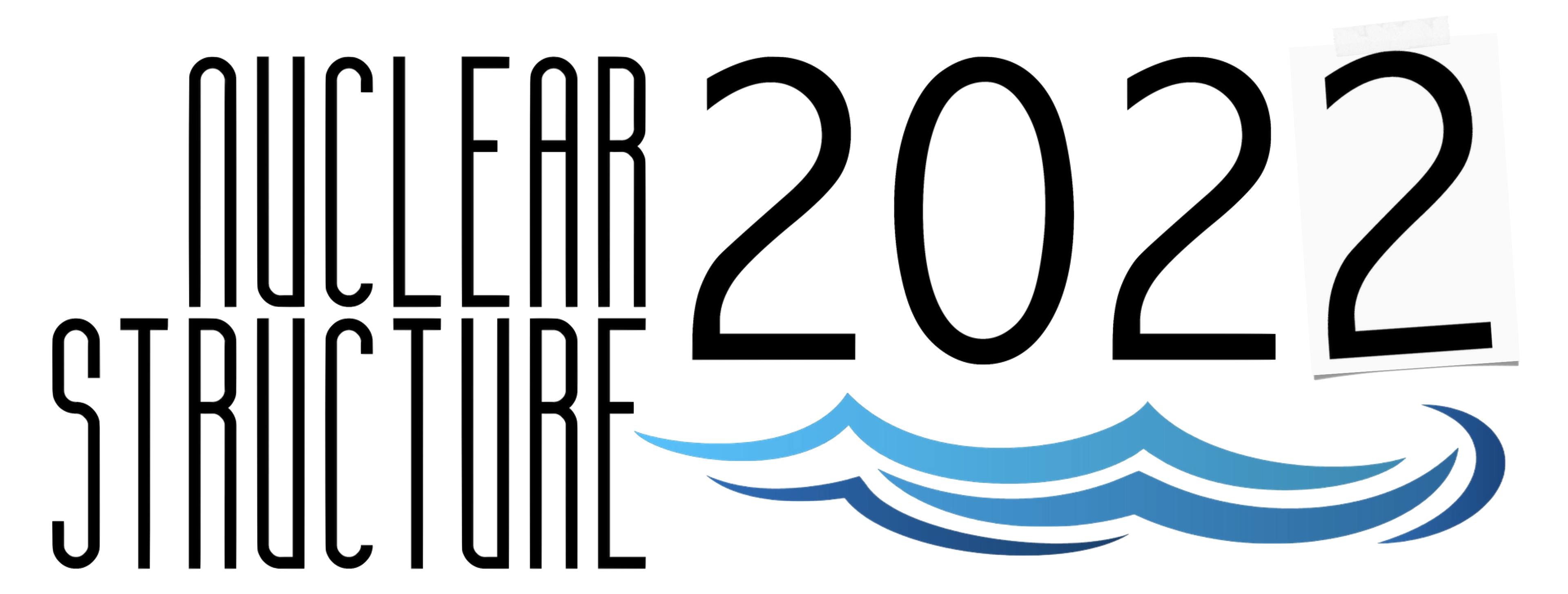Speaker
Description
Spin-Orbital (SO) splitting generates the magic numbers when N>20 but the SO potential itself is not well constrained. Calculations based on Density Function Theory (DFT) predict a “proton bubble” in the $^{34}$Si nucleus, together with a sudden reduction of the SO-splitting between the 0p$_{1/2}$ and 0p$_{3/2}$ orbitals in $^{35}$Si relative to the same orbitals in $^{37}$S. A similar “proton bubble” and a sudden reduction of SO-splitting was also predicted in N=19 isotones. However, a differing interpretation of SO-splitting change has been proposed in terms of the weak-binding effect. In order to investigate the energies of the SO partners in the N=19 isotonic chain, the $^{32}$Si(d,p)$^{33}$Si measurement was carried out using the SOLARIS solenoid spectrometer in the silicon array mode at the ReA Facility at Michigan State University. The goal of the measurement, through the determination of the relative single-particle energies, is to investigate whether any sudden SO reduction occurs $^{33}$Si compared to $^{35}$S and to make a direct comparison with the systematic trends in the N = 21 isotones. The experimentally measured SO-splitting in N=19 will be presented together with calculations based on a Wood-Saxon model, effective interactions via the shell model, and DFT calculations. New insight into the debate about the SO-splitting and the proton central depletion will also be discussed.
Furthermore, as solenoidal spectrometers become mainstay equipment for low-energy direct reactions, inelastic scattering reactions carried out using this type of device can become an important probe of the collective modes in nuclei. Results from a recent measurement of $^{15}$C(d,d’), carried out at the ATLAS Facility at Argonne National Laboratory using the HELIOS spectrometer will be presented. The ratio of neutron and proton quadrupole matrix elements was obtained, which can shed light on the degree of decoupling of the valence neutron in the halo nucleus $^{15}$C. Future opportunities of low-energy direct reactions with radioactive beams will also be discussed.
The authors acknowledge the support by the U.S. Department of Energy, Office of Science, Office of Nuclear Physics, under Contract Numbers DE-AC02-06CH11357 (ANL), DE-SC0020451(NSCL). SOLARIS is funded by DOE Office of Science under the FRIB Cooperative Agreement DE-SC0000661.

